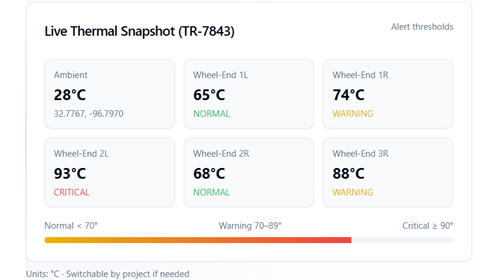
/
January 4, 2023
/
#
Min Read
Automotive: Then, Now, and Tomorrow
The turn of the last century was a completely different world when it came to transportation. Everything was built around walking, horse-drawn carriages, and to some extent trains for long-distance travel. When automobiles first appeared on the scene, they were viewed as toys or novelty items. But that didn’t last. The shift that occurred shortly after the introduction of the automobile changed everything, from how people traveled to how they lived. One hundred years later we are once again on the precipice of a massive transition, one that will alter the very fabric of society.
Automobile Gaining Traction
The adoption of the automobile started slow for a couple of reasons. First, the vehicles were quite limited: short range, no roof, and low speeds. Second, there was no way to mass-produce them. However, once automakers started exploring new technologies to make cars more convenient, comfortable, and user-friendly this pace of change quickly increased. By the mid-1920s, vehicle numbers skyrocketed, while the number of horses—the primary mode of transportation before cars—plummeted.
Though many welcomed this transition because horses were more limited in their carrying capacity and prone to accidents outside of the rider or driver’s control, many doubted and even opposed the automobile. In some ways, it was safer than carriages but in others, it was far more dangerous. Then there was also the matter of practicality.
The Propulsion Wars
Initial range was very limited, which restricted usage to nothing more than a quick outing, such as Sunday mosey from lower Manhattan to upper Manhattan for tea and back. To overcome this limitation, engineers needed to find an efficient and effective propulsion method. They experimented with steam, electricity, and gas. Electricity was a new invention that came with its own challenges and proved too expensive for the general public. Steam power, though a great success in boats, was impractical when it came to the infrastructure requirements associated with land travel. All things considered, diesel proved the most achievable, for the era.
Implementing Infrastructure
Another hindrance to the early adoption of the automobile was infrastructure or rather lack thereof. Gas stations were limited or non-existent. There were no national highways. Most roads were narrow, unpaved, or unmaintained. But naturally, people wanted to test the limits of this new invention. They wanted to race. They wanted to take road trips.
As a result, governments began to realize they couldn’t just let cities grow naturally. They needed to consider how to accommodate this new mode of transportation. City Planning became essential, as did paved roads, traffic lights, crosswalks, parking decks, highways, and service stations.
The pedestrian was de-emphasized alongside the horse-drawn carriage. Walking paths and wagon trails were supplanted by two-lane highways. Instead of being forced to live in a city, you could commute, which meant the development of suburbs and strip malls. The desire for long-range travel brought with it the need for multi-lane motorways and rest stops. In less than fifty years, the way we live was dramatically reshaped.
21st Century Reset
Today, we are seeing yet another acceleration in the pace of change in the automotive industry. Initially, we won’t see anything that drastically alters our lifestyles. We will see EV chargers supplant gas pumps, which might mean slightly longer rest stops but nothing extreme. We already see powertrain wars between hydrogen, clean fuels, and different EV battery chemistries. Of course, this is only the tip of the iceberg. But when connected, shared, autonomous, and electric vehicles become the norm, that's when we will really see a societal evolution.
We will see self-driving cars that drop their passengers off, safely park themselves, and communicate with every electronic device in their environment to reduce congestion and improve safety. We can expect to see a reduction in parking needs, a surge in green spaces, and larger numbers of pedestrian-only areas within cities. We will also see the emergence of a new ownership model. More people will rent out their cars to offset costs. Or they might avoid the headache of ownership altogether by purchasing a vehicle subscription service. Of course, none of this will be possible without connectivity.
.webp)
Connectivity & the Future
The first form of connectivity in cars was built-in phones in 1994. Then in 1996, GM launched OnStar which enabled automatic crash notifications and GPS. Once a year, a new map version was released, owners would download it onto a portable device then plug that into their vehicle to update the system and wait. And wait. And wait until the update was complete. This method is still being used by OEMs today to update specific electrical components.
When the first over-the-air vehicle updates arrived around 2011 it was because 4G tech overcame the limitations posed by cellular connection quality, Wi-Fi speeds, and data sizes. At first, it was limited to telematics but eventually expanded into navigation and infotainment. That’s where the technology stalled. The safety, security, reliability, and software complexity requirements in delivering updates to the entire vehicle made it impossible for OEMs to move beyond these components.
But why is this important? Why not continue updating in this time-tested way? Because the future of autonomous, shared, and electric vehicles depend on taking connectivity to the next level.
The Goal
Autonomous cars need to be constantly maintained and monitored. Full-vehicle over-the-air (OTA) updates to ensure that safety-critical software packages are delivered and installed exactly when they are needed. This reduces the risk of traffic collisions by eliminating outdated code and allowing OEMs to address issues before they become life-threatening recalls. Vehicle-wide data collection is another vital feature enabled by connectivity. With it, manufacturers can monitor vehicle health and usage in real-time. Through in-depth analysis of this data, automakers can improve vehicle design, reduce maintenance costs, increase user safety, and innovate new features and vehicle enhancements.
Let’s look at a use case example. A person is on their way to a concert. Their vehicle communicates with other vehicles, traffic lights, and parking monitors to expedite travel time. By connecting to online maps and the person’s e-tickets, the vehicle knows exactly which entrance to drop the person off at. It also knows that there is an open parking spot just around the corner from the venue and sends out a signal to other vehicles to alert them that the spot will no longer be available. Once the person has been dropped off, the vehicle then goes off to park itself. This type of vehicle-to-everything (V2X) communication won’t just get you to the gig on time, it will decrease accident rates, congestion, and road fatalities.
The Curse
It is not easy to create a fully connected vehicle. Manufacturers must be sure that everything is safe all the time. They need to overcome hardware constraints that limit the availability of computing power within the vehicle and result in increased latency. In addition, they need to consider scalability, both from a vehicle complexity standpoint as well as fleet size and scope. So how do they do it? How do OEMs enable vehicle-wide connectivity solutions to take our vehicles from where they are today to the shared, autonomous, and electric vehicles of the future?
The Gift
Sibros Deep Connected Platform has taken full-vehicle connectivity from a dream to a reality. It provides OEMs with the out-of-the-box connected vehicle solution for OTA updates, configurable data collection, and on-demand remote command diagnostics for every vehicle ECU. This scalable SaaS solution integrates seamlessly with any vehicle architecture, from tractors to two-wheelers and passenger vehicles to freight. DCP is the only OTA solution on the market with an ISO 26262 ASIL-D functional safety rating.
While some OEMs might prefer to pour a bunch of time, money, and resources into building a connectivity solution in-house, there is a strong argument for outsourcing. When looking at other aspects of the automobile, such as brakes, tires, radios, and other components, most OEMs don’t make those in-house anymore. That’s because a company specializing in brake pads, probably makes better brake pads, while a company specializing in steering wheels, probably makes better steering wheels. Connectivity is no different.
The beauty of adopting a comprehensive and purpose-built solution like DCP is it gives automakers the time, space, and peace of mind to focus on what really matters: the customer experience. It allows OEMs to keep up with the industry’s accelerating rate of change and transition into a lucrative new role in the value chain.
The Key to Automotive Success
With Sibros DCP OEMs can harness the real power of connectivity to support both car-centric and day-to-day customer experience use cases. The Deep Connected Platform eliminates many of the pain points related to software integration and full-vehicle connectivity, so automakers can give their undivided attention to customer relationships and avoid the outdated brick-and-mortar experience. To learn more about the Deep Connected Platform or schedule a demo, contact us today.






-min.png)



